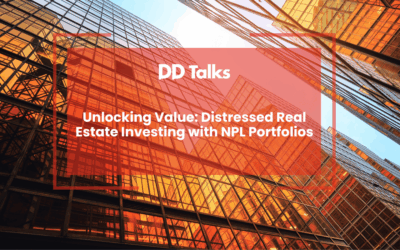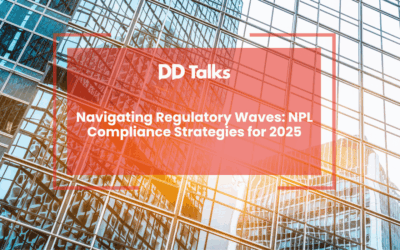NPL Investment Insights for 2025
- Market Scale: The European NPL market represents a €300 billion opportunity with diverse investment potential across multiple jurisdictions.
- Strategic Approach: Successful NPL investing requires comprehensive due diligence, understanding local regulatory frameworks, and sophisticated risk management techniques.
- Key Investment Considerations:
- Holding periods typically range from 3-7 years
- Portfolio diversification is crucial for risk mitigation
- Strong servicing partnerships are essential for maximizing returns
- Market Dynamics: Regulatory pressures, economic conditions, and bank deleveraging strategies continue to create significant NPL investment opportunities.
- Critical Success Factors:
- Robust data analytics capabilities
- Deep understanding of local market conditions
- Flexible investment frameworks
Table of Contents
- Understanding NPL Investment Fundamentals for Private Investors
- Key Drivers of NPL Investment Returns in 2025
- How Do Institutional Investors Approach NPL Acquisitions?
- Evaluating Greek and CEE NPL Market Opportunities
- NPL Investment Holding Periods and Exit Strategies
- Risk Management Strategies for NPL Portfolios
- Building an Effective NPL Investment Framework
Understanding NPL Investment Fundamentals for Private Investors
Non-Performing Loan (NPL) investments for private investors represent a significant opportunity in European financial markets. These distressed assets, typically loans that have been in default for 90 days or more, offer potentially attractive returns for informed investors. The European NPL market currently holds approximately €300 billion in non-performing exposures, creating diverse opportunities across different jurisdictions.
To participate in NPL investing, private investors must understand the basic requirements, including substantial capital reserves, expertise in debt collection processes, and strong relationships with servicing partners. Success in this market requires thorough knowledge of local regulatory frameworks and recovery procedures.
Key Drivers of NPL Investment Returns in 2025
Market pricing dynamics play a crucial role in determining NPL investment returns. Current market conditions show increasing pressure on banks to reduce their NPL ratios, creating opportunities for strategic investors. The regulatory environment, particularly the implementation of new EU directives, continues to shape market accessibility and pricing.
Economic factors significantly impact NPL values, including interest rates, property market conditions, and overall economic growth. Understanding these drivers is essential for developing effective investment strategies. Request our detailed agenda for comprehensive market analysis and forecasting insights.
How Do Institutional Investors Approach NPL Acquisitions?
Institutional investors employ sophisticated approaches to NPL acquisitions, beginning with comprehensive due diligence processes. This includes detailed analysis of loan documentation, collateral valuation, and borrower creditworthiness. Portfolio evaluation methods typically involve statistical analysis, vintage performance review, and recovery rate assessments.
Risk assessment frameworks focus on key metrics such as loan-to-value ratios, historical collection rates, and jurisdictional recovery timelines. Successful institutional investors maintain robust data analytics capabilities and experienced workout teams.
Evaluating Greek and CEE NPL Market Opportunities
The Greek NPL market continues to offer significant opportunities, with banks actively reducing their non-performing exposures. Central and Eastern European (CEE) markets present varying levels of maturity and opportunity, with some countries showing particularly attractive risk-return profiles.
Regional regulatory considerations vary significantly across jurisdictions, affecting recovery timelines and costs. Success factors include understanding local legal frameworks, establishing strong servicing partnerships, and maintaining efficient workout processes.
NPL Investment Holding Periods and Exit Strategies
NPL holding period strategies typically range from 3 to 7 years, depending on portfolio characteristics and market conditions. Factors affecting holding duration include legal recovery timelines, market liquidity, and workout efficiency. Understanding optimal holding periods is crucial for maximising returns.
Exit options include portfolio sales, securitisation, and individual loan resolutions. Timing considerations must account for market cycles, regulatory changes, and operational efficiency improvements.
Risk Management Strategies for NPL Portfolios
Effective risk management in NPL investments requires sophisticated diversification approaches across asset types, regions, and recovery strategies. Selecting appropriate servicing partners is crucial, as their expertise and local market knowledge significantly impact returns.
Workout process optimization involves implementing efficient collection strategies, maintaining strong borrower relationships, and leveraging technology solutions for portfolio management.
Building an Effective NPL Investment Framework
Successful NPL investment requires robust portfolio construction guidelines that balance risk and return objectives. Performance monitoring systems should track key metrics including collection rates, resolution timelines, and cost efficiency.
Resource allocation strategies must consider both human capital and technological requirements. Effective frameworks incorporate regular performance reviews, market analysis updates, and strategy adjustments based on changing conditions.
Frequently Asked Questions
- What are Non-Performing Loans (NPLs) and why are they attractive to investors?
- Non-Performing Loans are debt instruments where borrowers have defaulted for 90+ days. They are attractive to investors due to potential high returns, typically purchased at significant discounts from face value, with opportunities for strategic debt recovery and portfolio optimization.
- How much capital is typically required to invest in NPL portfolios?
- NPL investments usually require substantial capital reserves, often starting from €5-10 million. Institutional and sophisticated private investors typically need significant financial resources to effectively participate in these markets, covering acquisition costs and potential workout expenses.
- What are the primary risks associated with NPL investments?
- Key risks include complex legal recovery processes, uncertain collection rates, market volatility, jurisdictional regulatory differences, and potential underestimation of workout costs. Successful investors mitigate these risks through thorough due diligence, diversification, and expert servicing partnerships.
- Which European markets currently offer the most promising NPL opportunities?
- Greece and Central/Eastern European markets currently present significant NPL investment opportunities. These regions feature active bank deleveraging, evolving regulatory frameworks, and attractive risk-adjusted return potential compared to more saturated Western European markets.
- What is the typical holding period for NPL investments?
- NPL investment holding periods typically range between 3-7 years, depending on portfolio complexity, legal recovery timelines, and market conditions. Successful strategies involve careful timing of portfolio resolution and exit to maximize investment returns.
- How do investors evaluate NPL portfolio performance?
- Investors assess NPL portfolio performance through metrics including collection rates, recovery timelines, cost efficiency, loan-to-value ratios, and comparative vintage performance analysis. Advanced data analytics and robust monitoring systems are crucial for effective evaluation.
- What technological capabilities are important for NPL investment success?
- Critical technological capabilities include advanced data analytics platforms, portfolio management software, digital debt collection tools, and systems enabling efficient borrower communication and workout strategy implementation.
Networking for Growth: Connecting Stakeholders in the NPL Ecosystem




0 Comments